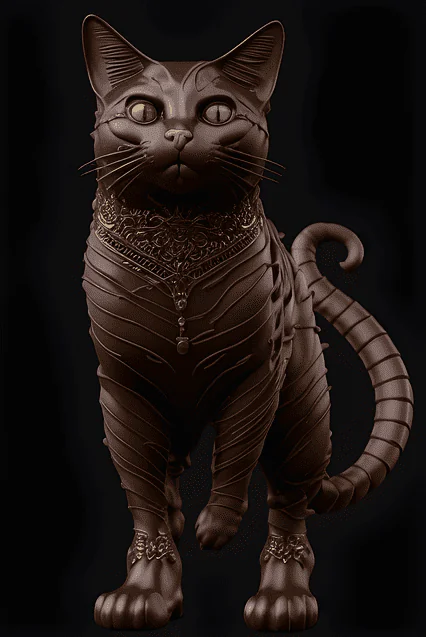
A Tempting Adventure:
Welcome to the Chocoholic’s Paradise, where every bite is a journey, and every bar tells a story. Chocolate, a beloved treat enjoyed by millions, has a rich and fascinating history that spans cultures, continents, and centuries. From its ancient origins in Mesoamerica to its present-day status as a global delicacy, chocolate’s allure is timeless. This article invites you on a tempting adventure through the world of chocolate, revealing secrets, exploring its varieties, and delving into its profound impact on society and culture. Prepare to be captivated by the magic of chocolate, a true chocoholic’s paradise.
The Origins of Chocolate: A Journey Through Time
Chocolate’s story begins over 3,000 years ago in the rainforests of Central and South America, where the ancient Olmecs, Mayans, and Aztecs revered the cacao tree. The Mayans and Aztecs used cocoa beans as currency and crafted a bitter beverage called “xocoatl,” often flavored with spices like chili and vanilla. This drink was believed to possess mystical and medicinal properties, reserved for royalty and warriors.
When Spanish explorers encountered cacao in the 16th century, they brought it back to Europe, where sugar was added, transforming it into the sweet treat we know today. The drink quickly gained popularity among European aristocracy, eventually spreading throughout the continent. This marked the beginning of chocolate’s journey from a sacred ritualistic beverage to a beloved global indulgence.
The Evolution of Chocolate: From Bean to Bar
The process of turning cocoa beans into chocolate is both an art and a science. It starts with the harvesting of cacao pods, which are split open to extract the beans. These beans undergo fermentation, drying, roasting, and grinding to produce cocoa mass, which is then separated into cocoa solids and cocoa butter. The combination of these components, along with sugar and sometimes milk, determines the type and quality of the final product.
In the 19th century, technological advancements revolutionized chocolate production. The invention of the cocoa press by Coenraad van Houten allowed for the extraction of cocoa butter, leading to the creation of solid chocolate bars. Later, the conching process developed by Rodolphe Lindt improved the texture and flavor of chocolate, making it smoother and more palatable. These innovations paved the way for the mass production and commercialization of chocolate, making it accessible to people around the world.
The Many Faces of Chocolate: Exploring Varieties and Flavors
Chocolate comes in various forms, each with its unique characteristics and flavor profiles. The three primary types of chocolate are dark, milk, and white chocolate, each offering a different taste experience.
– Dark Chocolate: Known for its intense and rich flavor, dark chocolate contains a high percentage of cocoa solids and little to no milk. It is often praised for its health benefits, including antioxidants and potential heart health improvements. The taste can range from bitter to sweet, depending on the cocoa content and sugar levels.
– Milk Chocolate: Creamy and sweet, milk chocolate contains milk powder or condensed milk, which gives it a smoother texture and milder flavor compared to dark chocolate. It is the most popular type of chocolate and is often used in confections and desserts.
– White Chocolate: Made from cocoa butter, sugar, and milk solids, white chocolate lacks cocoa solids, giving it a distinctively sweet and creamy taste. Although some debate its classification as “chocolate” due to the absence of cocoa solids, it remains a favorite for its unique flavor and versatility in culinary applications.
Beyond these primary types, there are numerous specialty chocolates, including ruby chocolate, which boasts a natural pink hue and fruity taste, and single-origin chocolates, which highlight the unique flavors of cacao from specific regions.
The Cultural Impact of Chocolate: From Rituals to Modern Obsession
Chocolate’s influence extends far beyond the culinary world; it has played a significant role in cultural rituals, art, and even economics. In ancient Mesoamerican civilizations, cacao was considered a gift from the gods, used in religious ceremonies and as a symbol of wealth and power. The ritualistic aspects of chocolate consumption continue in modern traditions, such as the giving of chocolates on Valentine’s Day and the creation of elaborate chocolate sculptures and displays.
In contemporary society, chocolate has become a symbol of indulgence and luxury. Gourmet chocolatiers craft intricate creations, and chocolate tastings have become akin to wine tastings, highlighting the complexity and diversity of flavors. Moreover, the ethical considerations surrounding chocolate production, such as fair trade and sustainability, have become increasingly important, influencing consumer choices and industry practices.
Chocolate and Health: Myths and Facts
While chocolate is often associated with indulgence, it also has several health benefits when consumed in moderation. Dark chocolate, in particular, is rich in antioxidants called flavonoids, which can help reduce inflammation and improve heart health. Studies have also suggested that dark chocolate may enhance cognitive function and provide mood-boosting effects due to its ability to stimulate the release of endorphins and serotonin.
However, it is essential to distinguish between the benefits of dark chocolate and the potential drawbacks of consuming chocolate products high in sugar and unhealthy fats. Moderation is key, and choosing high-quality chocolate with a high cocoa content can maximize health benefits while minimizing adverse effects.
Conclusion
The world of chocolate is a rich tapestry of history, culture, and flavor. From its ancient origins to its modern-day allure, chocolate continues to captivate and delight people worldwide. Whether you are a seasoned chocoholic or a curious newcomer, the journey through chocolate’s paradise is filled with endless discoveries and temptations. Embrace the adventure, savor the flavors, and let the magic of chocolate transport you to a world of pure indulgence.
